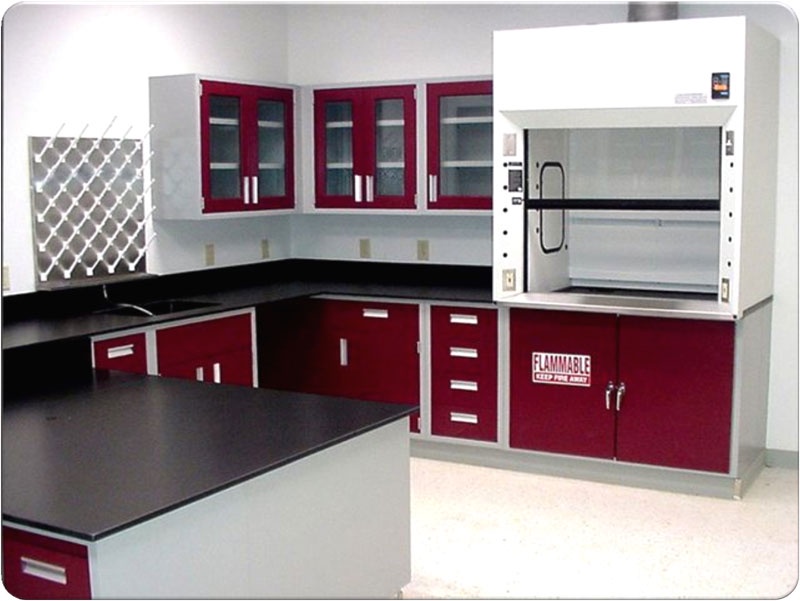Laboratory furniture is not your typical office or home furniture; it serves a unique and critical purpose in the world of science and research. Laboratories are dynamic environments with specific requirements, and the furniture used within them must meet these needs to ensure safety, functionality, and efficiency. In this blog, we will delve into the specific characteristics that set laboratory furniture apart.
1. Chemical Resistance: One of the foremost characteristics of laboratory furniture is its ability to resist chemical exposure. Laboratories often deal with a wide range of chemicals, including corrosive acids, strong bases, and volatile solvents. Furniture surfaces, such as countertops and cabinets, should be made of materials like epoxy resin, phenolic resin, or stainless steel, which can withstand the potentially damaging effects of these substances.
2. Durability: Laboratories are high-activity areas with equipment constantly in use. Furniture must be built to last in such demanding conditions. Durable materials like stainless steel, high-pressure laminate, or solid wood are commonly used to ensure the furniture can withstand the rigors of daily use without degrading.
3. Flexibility and Modularity: Laboratories often require adaptable workspaces to accommodate various experiments and research projects. Modular furniture systems are designed to be flexible, allowing users to reconfigure their workspace as needed. This characteristic promotes efficiency and maximizes the utility of laboratory furniture.
4. Ergonomics: Ergonomic design is vital to support the well-being and productivity of laboratory personnel. Chairs, workbenches, and other furniture should be adjustable to accommodate different users and promote proper posture. Ergonomic considerations can reduce the risk of repetitive strain injuries and improve overall comfort during long hours of work.
5. Ventilation Integration: Proper ventilation is essential in laboratories to ensure the removal of hazardous fumes and vapors. Some laboratory furniture, such as fume hoods and chemical storage cabinets, is equipped with ventilation systems that seamlessly integrate with the laboratory's overall ventilation infrastructure. This characteristic ensures the safety of laboratory staff and maintains a clean working environment.
6. Electrical and Data Connectivity: Modern laboratories rely heavily on electronic equipment for data collection and analysis. Laboratory furniture often includes built-in electrical outlets and data connectivity ports to support these devices. This feature minimizes cable clutter, reduces the risk of tripping hazards, and ensures a convenient power source for equipment.
7. Safety Features: Safety is a top priority in laboratories, and the furniture must reflect this concern. Laboratory furniture often includes safety features like rounded edges and corners to prevent injuries. Anti-tip mechanisms are also common to ensure that heavy equipment or materials do not cause furniture to become unbalanced and tip over.
8. Load-Bearing Capacity: Laboratories use a wide range of equipment, some of which can be quite heavy. Laboratory furniture should have a high load-bearing capacity to support heavy instruments, ensuring stability and safety. Robust construction is crucial in this regard.
9. Fire Resistance: Given the potential for chemical reactions and flammable materials in laboratories, fire-resistant materials and designs are imperative for laboratory furniture. Fire-resistant coatings or non-combustible materials help minimize the risk of fires spreading through the furniture.
10. Cleanliness and Hygiene: Maintaining a sterile and clean environment is essential in many laboratory settings. Furniture should be designed for easy cleaning and sanitation, with materials that resist stains and are compatible with laboratory-grade disinfectants.
In summary, laboratory furniture in kuwait possesses distinct characteristics tailored to the unique demands of laboratory environments. These characteristics include chemical resistance, durability, flexibility, ergonomic design, ventilation integration, electrical and data connectivity, safety features, high load-bearing capacity, fire resistance, and cleanliness. By selecting laboratory furniture that embodies these characteristics, research facilities can ensure a safe, productive, and efficient workspace for their scientific endeavors.


No comments yet